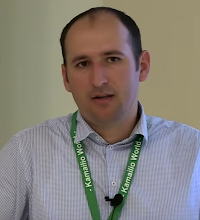Fours year ago,
sip-router.org was launched as a project to merge the source code of two SIP servers:
Kamailio and SER (SIP Express Router) – the
announcement is available here. About one year later, the source code trees were merged, opening the testing period for releasing Kamailio v3.0.0, which
was done in January 2010. The roots and rules of merging were settled in a face to face meeting in Karlsruhe, Germany, on November 10, 2008 (
summary –
minutes –
photos).
Looking back, those were completely crazy times, but worth it all.
There were many developers that spent endless efforts to make the
merging happen and keep the best of the two projects. Then, new
developers benefited of a more flexible and better scalable core
framework that enabled faster innovation and possibility for dozens of
improvements.
There were four major releases meanwhile (
v3.0.x,
v3.1.x,
v3.2.x and
3.3.x) –
Ohloh statistics
reflect better than anything the history and current state of
development. From a personal perspective, I wouldn’t have thought four
years ago that we will be so far today. Going through some bits of the
outcome:
- asynchronous TCP and TLS
- asynchronous SIP message processing framework
- raw UDP sockets and SCTP with multi-homing and multi-streaming
- onsend and event routes
- configuration file preprocessor directives
- extended AVPs
- configuration message queues
- step-by-step configuration file debugger and execution trace
- connectors for memcached, redis and cassandra
- topology hiding and number portability system
- embedded Lua, Python and Mono (C#, VisualBasic, etc.) interpreters
- embedded HTTP and XCAP server
- broad implementation of SIMPLE presence server (OMA, RCS/RCSe extensions)
- embedded MSRP relay
- SDP, XML and JSON operations in configuration file
- IMS extensions
- distributed SIP capturing system
- WebSockets transport layer
- more you can find in the release notes for each major version and summary about the development branch…
I was deliberately not mentioning any name, because besides the
developers, the project’s community had a relevant role in keeping the
standards high for stability, performances and innovation, bringing the
project at this point. Not to forgot that there is a steady increase of
new businesses relying on Kamailio for products and services, ensuring
financial power around the project. All these make Kamailio today a
truly open source project, combining quality development, with a
fantastic community and stronger business opportunities!
There are all premises for an excellent evolution and development of
the project from now on! Based on the past, it is going to be hard not
to like what is baked by out team members as I write … watch our news
closely!
Remember that is open source and you can be part of it –
contributing to code, testing, helping on forums or advocating, is first
helping you than the others!



